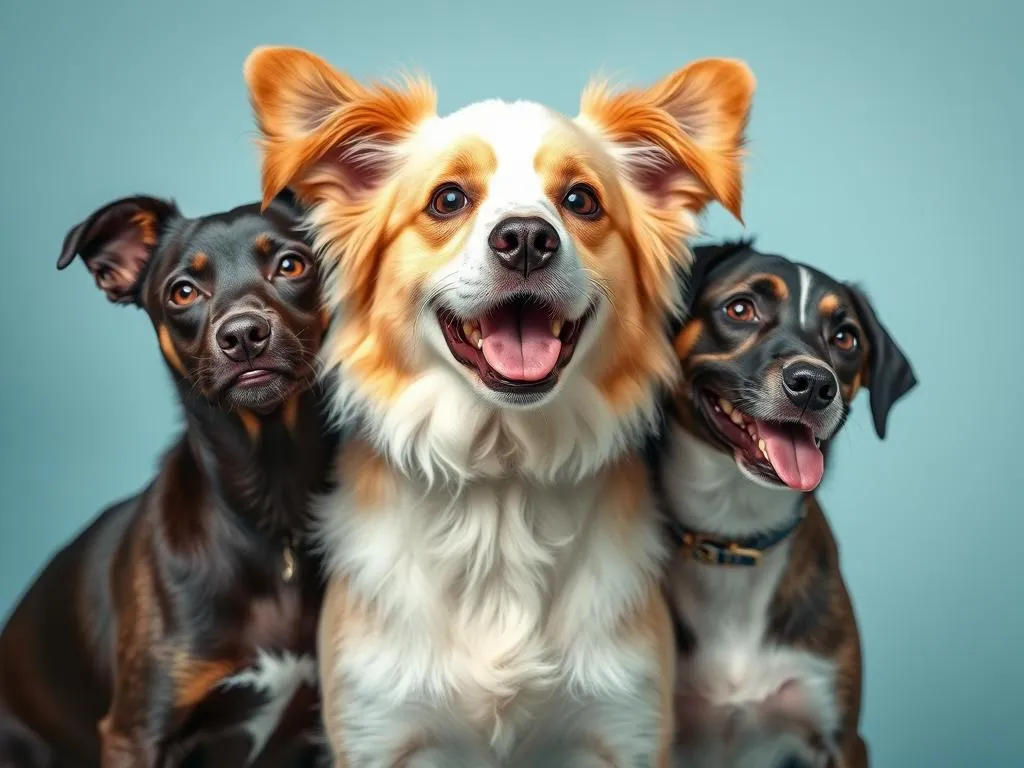
Introduction
As pet lovers, many of us dream of a home filled with the joyful chaos of multiple furry friends. The increasing popularity of multi-pet households reflects a desire for companionship and the joy pets bring to our lives. However, the success of such households often hinges on choosing the right dog breed that will coexist peacefully with other pets. Understanding the nature and temperament of various dog breeds can significantly enhance the harmony within your home.
In this post, we’ll explore dog breeds who get along with other pets. By focusing on breeds known for their friendliness and adaptability, we aim to help prospective pet owners make informed decisions when considering adding a dog to their existing family of animals.
Understanding Pet Dynamics
Behavioral Traits of Dogs
To create a harmonious multi-pet environment, it’s essential to understand the behavioral traits of dogs. Socialization plays a critical role in developing good behavior with other pets. Dogs that are well-socialized tend to be more adaptable and less territorial, making them generally friendlier towards other animals.
Temperament is another crucial factor. Some breeds are inherently more sociable and tolerant than others. For example, a breed known for its gentle demeanor may be more inclined to befriend a cat than a more aggressive breed.
Factors Influencing Compatibility
Several factors influence compatibility between dogs and other pets:
- Age of Pets: Younger pets are usually more adaptable and willing to accept new companions, while older pets may be set in their ways.
- Socialization History: Pets that have been exposed to different animals from a young age often display more amicable behavior.
- Size and Energy Levels: A large, energetic dog may unintentionally intimidate a smaller, more timid pet. Conversely, a smaller dog may be overwhelmed by an exuberant larger pet.
- Breed Characteristics: Certain breeds are predisposed to get along with others due to their inherent nature.
By considering these factors, pet owners can create a more balanced environment for all pets involved.
Top Dog Breeds That Get Along with Other Pets
Labrador Retriever
Labrador Retrievers are known for their friendly demeanor and adaptability, making them one of the best dog breeds who get along with other pets. Their social nature means they often thrive in multi-pet households. Labradors are generally good with cats, rabbits, and even smaller animals like guinea pigs. Their playful attitude encourages interaction, and many owners report positive experiences integrating Labradors into their homes with various pets.
Golden Retriever
Golden Retrievers are another breed celebrated for their gentle nature and friendly disposition. These dogs are incredibly sociable and often get along well with other animals. There are countless anecdotes of Golden Retrievers peacefully cohabitating with cats, birds, and even farm animals. Their calm demeanor makes them ideal companions for families looking to add a dog to their multi-pet household.
Beagle
Beagles are known for their sociable nature and pack mentality, which makes them excellent candidates for homes with other pets. Their friendly and curious nature allows them to form bonds with cats and other dogs quickly. Beagle owners often share stories of their pets getting along famously with various animals, showcasing their adaptable and friendly behavior.
Cavalier King Charles Spaniel
The Cavalier King Charles Spaniel is an affectionate breed that thrives on companionship, making them great for homes with multiple pets. Their gentle personality allows for easy integration with other animals. Many owners have reported successful experiences introducing Cavaliers to cats and other small pets, highlighting their friendly nature.
Basset Hound
Basset Hounds possess a calm demeanor and low energy, making them excellent companions for other pets. Their laid-back attitude allows them to coexist peacefully with cats and small animals. Instances of Basset Hounds living harmoniously with other pets are common, as they tend to be more relaxed and tolerant.
Cocker Spaniel
Cocker Spaniels are friendly and sociable dogs that generally get along well with other animals, including children. Their playful nature makes them ideal playmates for other pets. Many Cocker Spaniel owners have shared positive stories of their dogs integrating seamlessly with other pets, reinforcing their reputation as a friendly breed.
Poodle (Standard, Miniature, and Toy)
Poodles—whether Standard, Miniature, or Toy—are highly trainable, social, and adaptable. These dogs can coexist with various pets due to their intelligence and eagerness to please. Poodles are often seen playing with cats and other small animals, showcasing their friendly nature. Their versatility allows them to thrive in multi-pet environments.
Boxer
Boxers are known for their playful and energetic nature, but they can also be gentle with other pets. Their friendly disposition makes them suitable for homes with other dogs and cats. Experiences shared by Boxer owners often highlight their ability to play nicely with other household pets while maintaining a protective yet friendly demeanor.
Shih Tzu
Shih Tzus are small dogs with a friendly disposition, making them great companions for other small pets. Their gentle nature allows them to interact positively with cats and other small animals. Owners often report that Shih Tzus adapt well to multi-pet households, showcasing their friendly and sociable behavior.
Maltese
The Maltese is an affectionate breed known for its compatibility with other small pets. These dogs tend to have gentle and friendly personalities, allowing them to coexist peacefully with various animals. Owner experiences often highlight the Maltese’s ability to integrate seamlessly into multi-pet households due to their loving nature.
Tips for Introducing a New Dog to Existing Pets
Preparing Your Home for New Arrivals
Before bringing a new dog into a multi-pet household, it’s essential to prepare your home. Create safe spaces for existing pets to retreat to if they feel overwhelmed. This can help reduce stress during introductions. Setting up a controlled environment, such as using baby gates or separate rooms, can also facilitate smoother introductions.
Effective Introduction Techniques
Gradual introductions are key to ensuring a successful integration. Start with scent swapping, allowing pets to become familiar with each other’s scents before meeting face-to-face. When it’s time for the initial meeting, supervise the interaction closely and watch for any signs of stress or aggression.
Monitoring Interactions
During the initial interactions, observe your pets’ body language. Signs of stress, such as growling, barking, or hiding, indicate that you may need to intervene. It’s crucial to manage conflicts calmly and consistently, ensuring all pets feel safe and secure in their environment.
Training and Socialization Strategies
Importance of Early Socialization
Early socialization is vital for puppies, as it helps them develop positive behaviors towards other animals. Key socialization periods occur between three and fourteen weeks of age. Exposing puppies to various animals during this time can significantly influence their behavior as adults, helping them become well-adjusted members of a multi-pet household.
Basic Commands and Training Tips
Teaching essential commands such as “sit,” “stay,” and “leave it” can promote good behavior in multi-pet households. Training exercises that encourage positive interactions, such as playing together or sharing toys, can foster friendships between pets. Consistent training reinforces desired behaviors and helps create a harmonious environment.
Ongoing Socialization Practices
Continued socialization throughout a dog’s life is crucial. Engage in activities that allow dogs to interact with other species, such as playdates with other pets or visits to pet-friendly parks. Regular exposure to different animals helps maintain social skills and adaptability, ensuring a peaceful multi-pet household.
Conclusion
Choosing the right dog breed for a multi-pet household significantly impacts the overall harmony of your home. Breeds known for their compatibility with other animals, such as Labrador Retrievers, Golden Retrievers, and Beagles, can help create a joyful environment for all pets involved.
As responsible pet owners, it’s essential to ensure that all pets feel safe and happy. Being patient and proactive in fostering positive relationships between pets will lead to a successful integration. Remember, the goal is to create a loving and harmonious household where all pets can thrive together.
By understanding the dynamics of pet interactions and carefully selecting breeds known for their sociability, you can create a multi-pet home filled with love, laughter, and companionship.









